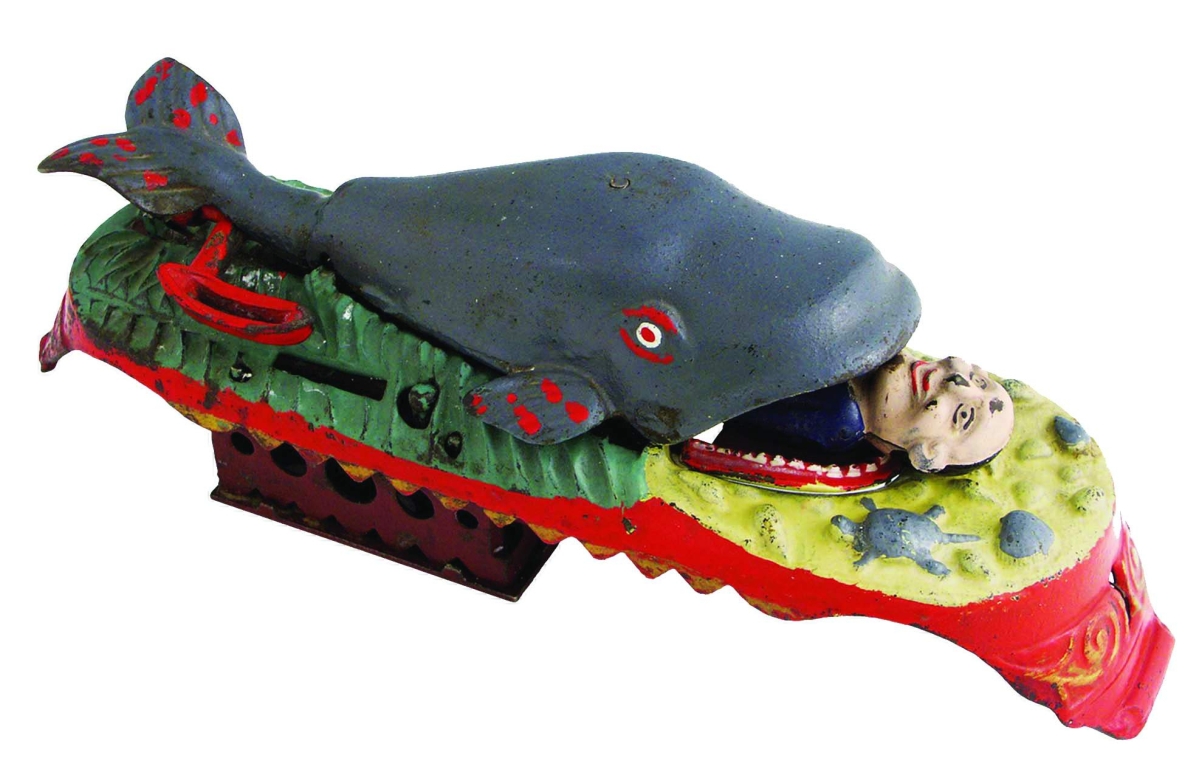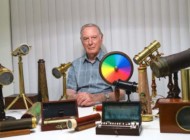_preview_fotor_fotor.jpg)
In December 2017, Morphy Auctions acquired James D. Julia, Inc, now a division of Morphy’s. Sales conducted by the two houses grossed almost $80 million last year. Company founder and president Dan Morphy grew up in Pittsburgh, the son of physician John Morphy Sr and his wife Janet, antiques enthusiasts who encouraged his youthful interest in collecting. Now 46, Dan and his wife, Christine, have a 15-year-old daughter, Haley, who shows every sign of having inherited the family’s collecting gene.
Your interest in antiques began in your teens?
Actually, it was even earlier. I was buying coins and baseball cards before I was 10 years old and then candy containers, still and mechanical banks, toys, marbles, etc. My father collected banks, but I wasn’t allowed to play with them. On weekends, he went antiquing and I went along. He encouraged me to get involved. My first selling was done via magazine ads. By the time I was 15, I was setting up at Sunday shows in the Pittsburgh area. I met some of the legendary bank collectors in the area, Anthony Haradin and Paul Resnick among them. My next step was exhibiting at Norm Schaut’s Atlantique City show with my dad and brother. We’d compete to see who could buy the most stuff on the floor and then sell it during the show.
Buying and selling wasn’t intended to be your life’s work?
No, I was pretty sure I’d be going into the pharmaceutical industry and went to Penn State. In 1995, I got a bachelor’s degree in biology. But things can change. My folks had a booth in one of the group shops in Denver, Penn. We stopped there one day on our way to the Jersey Shore. To make a long story short, I wound up buying a nearby building and by 1997 opened a co-op gallery. Many dealers in the gallery specialized in antique toys, banks and advertising. That was the beginning. In 2000, I bought Jim Burk’s semiannual York Antique Toy, Doll, Holiday & Advertising Show. I authored The Official Price Guide to Mechanical Banks in 2007.
What about Morphy Auctions?
I formed the auction company in 2004. The first sale featured antique toys. It did well and grew from there. Last year we conducted about 35 auctions at our showrooms in Denver, Penn., and Las Vegas, Nev. We sold more than 40,000 items. The company now has about 75 full-time employees, about 25 part-timers and several experts who help with the specialty sales. When I started, I looked around the industry to see what was working for other companies. I saw that people like Jim Julia and others were doing specialty auctions with highly qualified specialists. I believed that was the way to go. I knew it had to be combined with the absolute best customer service possible. We now send our people to classes at the Disney Institute, where they enhance their skills in public relations, interacting with other staff members and the like. Disney is the best and I want our people to learn from the best.

Still and mechanical banks were among Dan Morphy’s first loves. Morphy sold this Jonah Emerges mechanical bank from the Stephen and Marilyn Steckbeck collection for a record $414,000 in October 2007.
Was deciding to specialize the right decision?
Yes. In addition to toys and pop culture and mechanical and still banks, we have specialist departments in coin-op and gambling, firearms and militaria, advertising and general store, automobiles, automobilia and petroliana, coins and currency, fine and decorative art, Americana, and folk art, dolls and bears, jewelry and watches, sports memorabilia, Western and Native American and fishing and tackle. The key to succeeding in these categories is to be surrounded by the most knowledgeable men and women in each field. I believe that we have the very best. The Julia staff has really strengthened us. Buyers can be confident that catalog descriptions are as accurate as possible. Consignors know their collections will be presented to the public by people who fully understand the intricacies of specialized objects.
How do you reach buyers and sellers in these specialized fields?
I think we’re unique in our approach. We have a presence at more than 185 antiques shows and specialized collector conferences and shows annually. We have four teams, each with three or four staff members, who travel and set up large booths, specifically to interact with collectors all over the country. They display rarities in upcoming sales, distribute catalogs, discuss the auction process and how we can produce the best results if collectors are ready to sell some of their things.
What do you see in the future?
That’s simple. My goal is to be the best in any field we’re in and provide buyers and sellers with the absolute best experience possible. If we do that, we’ll grow.
-Rick Russack




